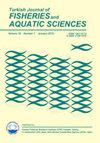Sensory Characteristics and Microbiological Quality Changes of Nile Tilapia Fillet Processed by Various Sous-vide Conditions During Chilled Storage
IF 1.7
4区 农林科学
Q3 FISHERIES
引用次数: 3
Abstract
Sensory characteristics and microbiological quality of Nile tilapia cooked with various sous-vide (SV) conditions including 50 and 60°C, for 30, 45 and 60 min (S5-30, S5-45, S5-60, S6-30, S6-45 and S6-60) and their changes during storage (4°C) were investigated, compared with control (cooking with boiling water). The result found that increasing temperature and time of SV accelerated protein degradation, both myofibrillar protein and connective tissue. This affected to the lower water-holding capacity (WHC) and shear force of samples treated with severe SV conditions (S6-45 and S6-60) (P<0.05). SV technique may less contribution to the flavor formation, particularly lipid oxidation products, since there were no differences in total volatile base nitrogen (TVB-N) content and thiobarbituric acid reactive substances (TBARS) value among all samples (P>0.05). However, SV cooked samples had higher sensory scores than control, both at day 0 (before storage) or throughout the storage time. This suggested the potential to improve consumer acceptability by this technique. In this study, SV at 60°C, 60 min seem to be the optimal condition for tilapia fillet, which can preserve at 4℃ for at least 6 weeks without any spoilage.不同低温冷藏条件下尼罗罗非鱼鱼片的感官特性及微生物品质变化
研究了尼罗罗非鱼在50和60°C的不同真空条件下(S5-30、S5-45、S5-60、S6-30、S6-45和S6-60)烹饪30、45和60min的感官特性和微生物质量,以及在储存(4°C)过程中的变化,并与对照(沸水烹饪)进行了比较。结果发现,SV的温度和时间的增加加速了肌原纤维蛋白和结缔组织的降解。这影响了严重SV处理样品(S6-45和S6-60)的持水能力(WHC)和剪切力较低(P0.05)。然而,SV烹饪样品在第0天(储存前)或整个储存时间内的感官得分均高于对照。这表明了通过这种技术提高消费者可接受性的潜力。在本研究中,60°C,60min的SV似乎是罗非鱼鱼片的最佳条件,它可以在4℃下保存至少6周而不会变质。
本文章由计算机程序翻译,如有差异,请以英文原文为准。
求助全文
约1分钟内获得全文
求助全文
来源期刊

Turkish Journal of Fisheries and Aquatic Sciences
FISHERIES-MARINE & FRESHWATER BIOLOGY
CiteScore
3.10
自引率
0.00%
发文量
43
审稿时长
3 months
期刊介绍:
Turkish Journal of Fisheries and Aquatic Sciences" (TrJFAS) is a refereed academic journal has been published by Central Fisheries Research Institute of Turkey and Japan International Cooperation Agency (JICA), and published in English.
It aims to address research and needs of all working and studying within the many varied areas of fisheries and aquatic sciences.
The Journal publishes English language original research papers, critical review articles, short communications and technical notes on applied or scientific research relevant to freshwater, brackish and marine environments.
TrJFAS was published biannually (April & November) between 2001 and 2009. A great number of manuscripts have been submitted to the journal for review from acceptance of the SCI index. Thereby, the journal has been published quarterly (March, June, September and December) from 2010 to 2017. The journal will be published monthly in 2018.
 求助内容:
求助内容: 应助结果提醒方式:
应助结果提醒方式:


